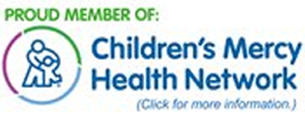Patellofemoral pain syndrome is one of the most common causes of knee pain in young athletes. The condition is an overuse injury that results from activities that cause pressure or friction on the cartilage behind the kneecap. Patellofemoral pain syndrome occurs frequently in athletes who participate in sports that involve running, jumping, or squatting.
Anatomy
The kneecap functions as a shield to protect the front of the knee. As a result, direct impact to the kneecap can cause damage to the cartilage that lines the back surface of the kneecap. In addition, the kneecap functions as a fulcrum to help the quadriceps (thigh muscles) straighten the knee. In this capacity, there is pressure on this same cartilage behind the kneecap that is related to how hard the quadriceps are contracting (Fc) and how bent the knee is (β) (see Figure 1). It is not unusual for the pressure on the back of the kneecap to exceed 1,000 pounds during an activity such as a simple squat.
In addition to pressure that can occur from bending the knee, the cartilage behind the kneecap is susceptible to friction as the knee moves between bending and straightening. The kneecap normally slides or tracks in a groove on the end of the thigh bone. When the kneecap tracks in the center of this groove (Figure 2a), the pressure is spread over the widest possible area. This minimizes areas of stress concentration and is considered the most efficient pattern for the kneecap handling the stresses associated with activity. When the kneecap is tilted or tracks outside of this groove, the pressure is unevenly distributed and the excessive forces may be more likely to cause knee pain (Figure 2b). This abnormal tracking can occur from a variety of causes including flatfeet, knock-knees, internally rotated femur (thigh bone), externally rotated tibia (shin bone), or weakness of the hip or thigh muscles.
Symptoms
Athletes with patellofemoral pain syndrome usually participate in running or jumping sports such as basketball, volleyball, track, or cross-country, and the pain often comes on when there has been a recent increase in training intensity or volume. Athletes report pain that is generally located around or behind the kneecap. The pain is worse when running, jumping, squatting, climbing stairs, walking downhill, or sitting for long periods.
People with flatfeet, intoeing, or knock-knees may be at higher risk for this condition because these conditions affect how the kneecap tracks. Athletes with tight hamstring and quadriceps muscles or weak thigh and hip muscles may also be at risk because of the effect these abnormalities have on pressure on the kneecap or tracking.
Other considerations
There are a number of other conditions that can cause pain around the kneecap. Pain that is localized to the bump below the kneecap may be Osgood-Schlatter disease. Pain that is localized to the patellar tendon attachment (at the bottom of the kneecap) may be patellar tendonitis or it may be due to an irritated growth plate. Pain on the outer portion of the knee or pain that is worse running down hills may be due to a condition called iliotibial band friction syndrome.
Because the treatment varies for different conditions, it is important to confirm the diagnosis and source of pain before beginning treatment. Pain that is associated with swelling, locking, instability, or disruption of daily activities or is in association with fever or other illness should be evaluated.
Treatment
Treatment for patellofemoral pain syndrome involves limiting running, jumping, squatting, or other pain-causing activities. Ice and anti-inflammatory medications can help reduce pain. Cross-training activities, such as swimming or low-resistance cycling, may be continued to maintain fitness provided that these activities do not cause pain.
The key to resolving patellofemoral pain syndrome is identifying and correcting the causes of the pain. The treatment for a particular individual with patellofemoral pain syndrome will depend on which of these causes seems to be contributory. Once the causes have been identified, the treatment requirements are usually obvious. Your doctor, a physical therapist, or a certified athletic trainer can help you identify causes and recommend specific treatments. They can also help monitor recovery and provide guidance for a gradual and safe return to sports activities.
Copyright © 2010 AAP Feed run on: 10/29/2025 Article information last modified on: 1/24/2022





